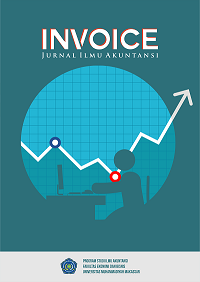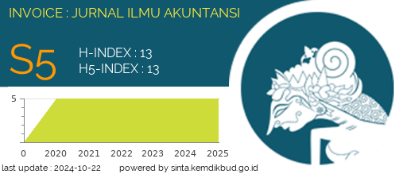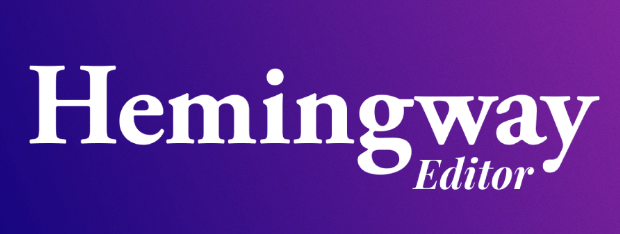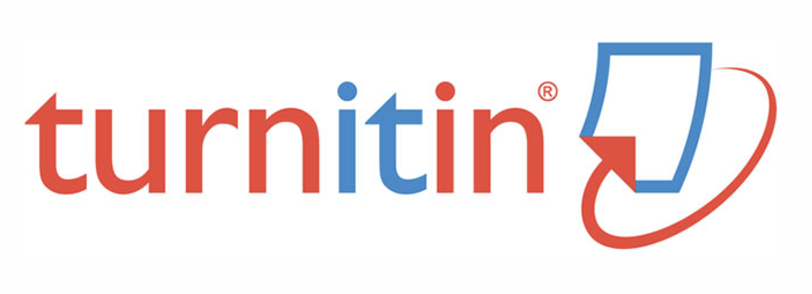The Effect of Return on Assets, Return on Equity, and Loan-to-Deposit Ratio on Capital Adequacy Ratio: Evidence from Indonesian State-Owned Banks
DOI: https://doi.org/10.26618/256npr93
Abstract
This study aims to analyze the effect of Return on Assets (ROA), Return on Equity (ROE), and Loan-to-Deposit Ratio (LDR) on the Capital Adequacy Ratio (CAR) of state-owned banks in Indonesia. Maintaining an optimal CAR is crucial for banks to ensure financial stability and compliance with regulatory requirements. To address this objective, panel data regression analysis was employed using secondary data obtained from the annual reports of state-owned banks for the 2019–2023 period. Several diagnostic tests were conducted to select the most appropriate model, and the Random Effect Model (REM) was determined to be the best fit. The empirical findings demonstrate that ROA, ROE, and LDR jointly exert a statistically significant influence on CAR, indicating that bank profitability and liquidity collectively play a role in determining capital adequacy. However, the partial results of the t-test reveal that only ROA has a significant positive effect on CAR, while ROE and LDR show no significant effect. These results highlight the importance of profitability, as measured by ROA, in strengthening capital adequacy. The findings provide valuable insights for policymakers as a reference for designing strategies to maintain banking stability, for banking institutions as input for evaluating financial health, and for investors and potential investors as a basis for assessing bank soundness before making investment decisions.
References
Benny Agus Setiono. (2023). PENGARUH RETURN ON ASSET (ROA) DAN RETURN ON EQUITY (ROE) TERHADAP HARGA SAHAM SEKTOR PERTANIAN YANG TERDAFTAR DI BURSA EFEK INDONESIA. Jurnal Aplikasi Pelayaran Dan Kepelabuhanan, 6(2), 44.
Bogale, A. T. (2020). Effect of Bank Specific And Macroeconomic Determinants on Capital Adequacy Ratio A Study on Ethiopian Private Commercial Banks. Research Journal of Finance and Accounting, 11(21), 1–11. https://doi.org/10.7176/rjfa/11-21-01
Fangky, A. S. (2020). PENGARUH RENTABILITAS, NON PERFORMING LOAN (NPL), LIKUIDITAS DAN INFLASI TERHADAP RASIO KECUKUPAN MODAL (CAR) (Pada Bank Pembangunan Daerah Periode 2016-2019). Jurnal Riset Manajemen Sains Indonesia (JRMSI), 11(2). https://doi.org/doi.org/10.21009/JRMSI.011.2.02
Fatimah, S. (2014). Pengaruh Rentabilitas, Efisiensi Dan Likuiditas Terhadap Kecukupan Modal Bank Umum Syariah. Al-Iqtishad: Journal of Islamic Economics, 6(1), 42–58. https://doi.org/10.15408/ijies.v6i1.1368
Gusvarizon, M., Ningsih, P. T. S., & Imaniah, I. (2024). Pengaruh Return on Asset (ROA) Dan Return on Equity (ROE) Terhadap Capital Adequacy Ratio (CAR) pada Bank Umum Syariah di Indonesia. In Ilmu Ekonomi Manajemen dan Akuntansi (Vol. 5, Nomor 1, hal. 42–57). https://doi.org/10.37012/ileka.v5i1.2145
Harun Al Rsayid, & Sosrowidigdo, S. (2022). Pandangan Pengaruh Return On Assets (ROA) Dan Return On Equity (ROE) Terhadap Kinerja Kesehatan Capital Adequacy Ratio (CAR) Pada Bank BTPN. Owner: Riset & Jurnal Akuntansi, 6(1). https://doi.org/https://doi.org/10.33395/owner.v6i1.634
Hofmann, M. (2021). Vision of Efficient Processes BT - A Holistic Approach to Process Optimisation: Tools and Practical Examples to Create Efficient Workflows (M. Hofmann (ed.); hal. 3–14). Springer Fachmedien Wiesbaden. https://doi.org/10.1007/978-3-658-34097-1_1
Kalsum, U., & Hidayat, R. (2023). Biaya Operasional Pendapatan Operasional (Bopo) Dan Capital Adequacy Ratio (Car) Terhadap Profitabilitas Bank Umum Syariah Di Indonesia. Balance : Jurnal Akuntansi dan Bisnis, 8(1), 76. https://doi.org/10.32502/jab.v8i1.6125
Kishore, K. (2022). Interrelationship of deposits and borrowings with capital adequacy ratio empirical analysis of Indian banks. Journal of Information and Optimization Sciences, 43(7), 1623–1634. https://doi.org/10.1080/02522667.2022.2128520
Konovalova, N., & Caplinska, A. (2020). Impact analysis of factors influencing bank capital management. Entrepreneurship and Sustainability Issues, 8(1), 484–495. https://doi.org/10.9770/jesi.2020.8.1(34)
Manullang, A., Pasaribu, R., & Nabillah, R. (2023). The Role of Islamic Financial Institutions for UMKM During the Covid -19 Pandemic. Indonesian Journal of Advanced Research, 2(5), 491–500. https://doi.org/10.55927/ijar.v2i5.4261
Manurung, T. B., & Horman, J. R. (2022). Analisis Nilai Returun on Asset Return on Equity Perusahaan Batubara Di Bursa Efek Indonesia. INTAN Jurnal Penelitian Tambang, 4(2), 104–109.
Rismanty, V. A., & Suraya, A. (2023). Pengaruh Capital Adequacy Ratio (Car) Dan Loan To Deposit Ratio (Ldr) Terhadap Return on Assets (Roa) Pada Pt Bank Mandiri. SCIENTIFIC JOURNAL OF REFLECTION : Economic, Accounting, Management and Business, 6(2), 349–358. https://doi.org/10.37481/sjr.v6i2.658
Salim, S., & Rianto, L. (2020). Pengaruh Roa, Ldr, Nim, Dan Npl Terhadap Capital Adequacy Ratio (Car). Jurnal Paradigma Akuntansi, 2(3), 1114. https://doi.org/10.24912/jpa.v2i3.9537
Saputra, A. J., & Angriani, R. (2023). Pengaruh Capital Adequacy Ratio (CAR), Non Performing Loan (NPL), Net Interest Margin (NIM), Loan To Deposit Ratio (LDR) Dan Biaya Operasional Pendapatan Operasional (BOPO) Terhadap Return On Asset (ROA) Pada Bank Perkreditan Rakyat (BPR) di Kota Batam. Akuntansi dan Manajemen, 18(1), 93–115. https://doi.org/10.30630/jam.v18i1.210
Tamulevivcienė, D. (2016). ENTREPRENEURSHIP AND SUSTAINABILITY ISSUES ISSN 2345-0282 (online) http://jssidoi.org/jesi/ METHODOLOGY OF COMPLEX ANALYSIS OF COMPANIES’ PROFITABILITY.
Tsygalov, Y. M., & Yashchenko, A. I. (2022). Improving the efficiency of the company’s activities while optimizing auxiliary business processes. Management Sciences, 12(2), 68–85. https://doi.org/10.26794/2304-022x-2022-12-2-68-85
Wulandari, N. S. D., & Purbawangsa, I. B. . (2019). PENGARUH NPL DAN LDR TERHADAP PROFITABILITAS DENGAN CAR SEBAGAI VARIABEL MEDIASI PADA LPD KOTA DENPASAR. E-Jurnal Manajemen Universitas Udayana, 8(4), 2098. https://doi.org/10.24843/ejmunud.2019.v08.i04.p08
Živanović, N., Živanović, V., & Bogavac, M. (2022). Efficiency of Business Entities in the Function of Organizational Changes. FBIM Transactions, 10(1), 86–94. https://doi.org/10.12709/fbim.10.10.01.09
Downloads
Published
Issue
Section
License
Authors who publish with Invoice: Jurnal Ilmu Akuntansi agree to the following terms:
-
Copyright Ownership
The copyright of all articles published in this journal remains with the author(s). However, the authors grant Invoice: Jurnal Ilmu Akuntansi the right of first publication with the work simultaneously licensed under a Creative Commons Attribution 4.0 International License (CC BY 4.0). This license allows others to share, copy, redistribute, adapt, and build upon the work for any purpose, even commercially, as long as proper credit is given to the original author(s) and the source. -
Licensing and Access
Invoice: Jurnal Ilmu Akuntansi provides immediate open access to its content on the principle that making research freely available to the public supports a greater global exchange of knowledge. All published materials are available freely without subscription or payment and can be accessed, downloaded, and reused by any user provided that appropriate attribution is given. -
Permission for Reuse
For uses not covered by the CC BY 4.0 license, such as commercial reprints, translations, or any form of adaptation without clear attribution, users must obtain written permission from the editorial team. Requests for such permissions can be directed to the editorial office at: [invoice@unismuh.ac.id]. -
Plagiarism and Originality
Authors are responsible for the originality of their submissions. All articles are screened for plagiarism using appropriate tools before acceptance. Manuscripts found to contain unoriginal content or infringing materials will be rejected or retracted as per journal policy.














